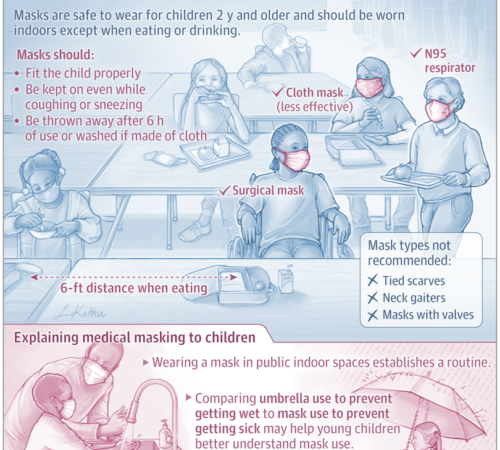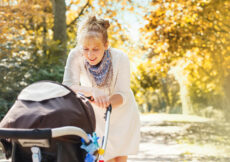January 17th, 2022
Last week, AHN Pediatrics hosted a Facebook Live event to answer parents’ questions regarding the COVID-19 pandemic (you can watch it here on Pediatric Alliance’s Facebook page). The questions we received beforehand and during the Q & A were outstanding and appreciated, with so many moms and dads contributing to a healthy and civil discussion.
Several parents asked about which types of face masks best protect their kids and those around them. (Remember: My mask protects you and your mask protects me.) Before we get to that, however, let’s talk about why the CDC (and most pediatricians, too) recommends that kids wear masks during the pandemic, especially while attending school:
Consistent and correct mask use is a critical strategy for preventing the transmission of SARS-CoV-2, the virus that causes COVID-19. CDC recommends that schools require universal indoor mask use for students, staff members, and others in kindergarten through grade 12 (K–12) school settings.
Researchers at the CDC compared schools that mandated mask-wearing by students, teachers, and staff with schools that didn’t. The results of their study, published last October in Morbidity and Mortality Weekly Report, shouldn’t be surprising to anyone with a basic understanding of how respiratory viruses are spread, especially among notorious germ-dispensers like kids. Simply said, masks work:
The results of this analysis indicate that increases in pediatric COVID-19 case rates during the start of the 2021–22 school year were smaller in U.S. counties with school mask requirements than in those without school mask requirements. School mask requirements, in combination with other prevention strategies, including COVID-19 vaccination, are critical to reduce the spread of COVID-19 in schools.
So what type of mask should my child wear? Aaron Collins is a mechanical engineer with a background in aerosol science. He is also The Mask Nerd. Collins describes what kids who are 2 and older should be wearing over their mouths and noses:
If possible, not a cloth or surgical one. These masks are moderately effective at capturing particles coming out of your own mouth – what we engineering nerds call “source control”. But they offer little protection against incoming particles. We call this part – how well the mask protects the wearer – respiratory protection.
A typical cloth mask, while better than nothing, only provides around 30-60% protection to the wearer. Surgical masks, while better at 40-80%, lack a tight fit to the face, resulting in large amounts of leakage around the mask.
Collins explains that the three most important aspects of a mask are good filtration, good fit on the face, and comfort. High-filtration “respirator” masks like the N95 (U.S.-certified) and the KN95 (certified in China) meet all three criteria:
When picking a mask you want to look at three criteria: filtration, comfort and fit. Respirators provide not only the filtration, but comfort from highly breathable materials, and a tight sealing to the face by the design of the mask.
This is what makes respirators such an easy option: you need not worry about anything other than finding one that fits your face. This ensures that all the air flows through the mask, not around it.
Good quality high-filtration masks are becoming more widely available to Americans. (Americans will soon be able to order free N95 masks online and have them delivered to their homes without charge.) However, getting a good fit on a young child with a small face can be a challenge. Dr. Michael Petrosky at AHN Pediatrics – Pediatric Alliance Arcadia told Chris Hoffman last week on KDKA-TV that even wearing an inferior cloth mask is better than wearing no mask at all:
“Fit is a big thing,” Dr. Petrosky said over Zoom. “Making sure the masks fit properly, snug over the nose, limiting gaps on the side of the face and under the chin.”
He said a way to improve the simple cloth masks is to double it with the widely-available disposable masks. The combination creates a stronger seal.
“Sometimes you get air gaps on the side or even above the nose. Putting them together, they can help zip those down,” Dr. Petrosky said.
Adults are powerful role models when it comes to wearing face masks, Pranshu Bhardwaj and Lindsay A. Thompson, MD point out:
Younger children may not remember a time before the COVID-19 pandemic, while older children may be growing impatient with daily masking. Both groups will take cues from their parents. We suggest always wearing a mask in public and affirming routine use to your children.
Read the CDC’s guidance on “Types of Masks and Respirators” updated January 14, 2022 here.
Watch an informative “Mask Nerd” video by Aaron Collins on YouTube here.
(Image: JAMA Pediatrics Patient Page – 12/28/21)




































